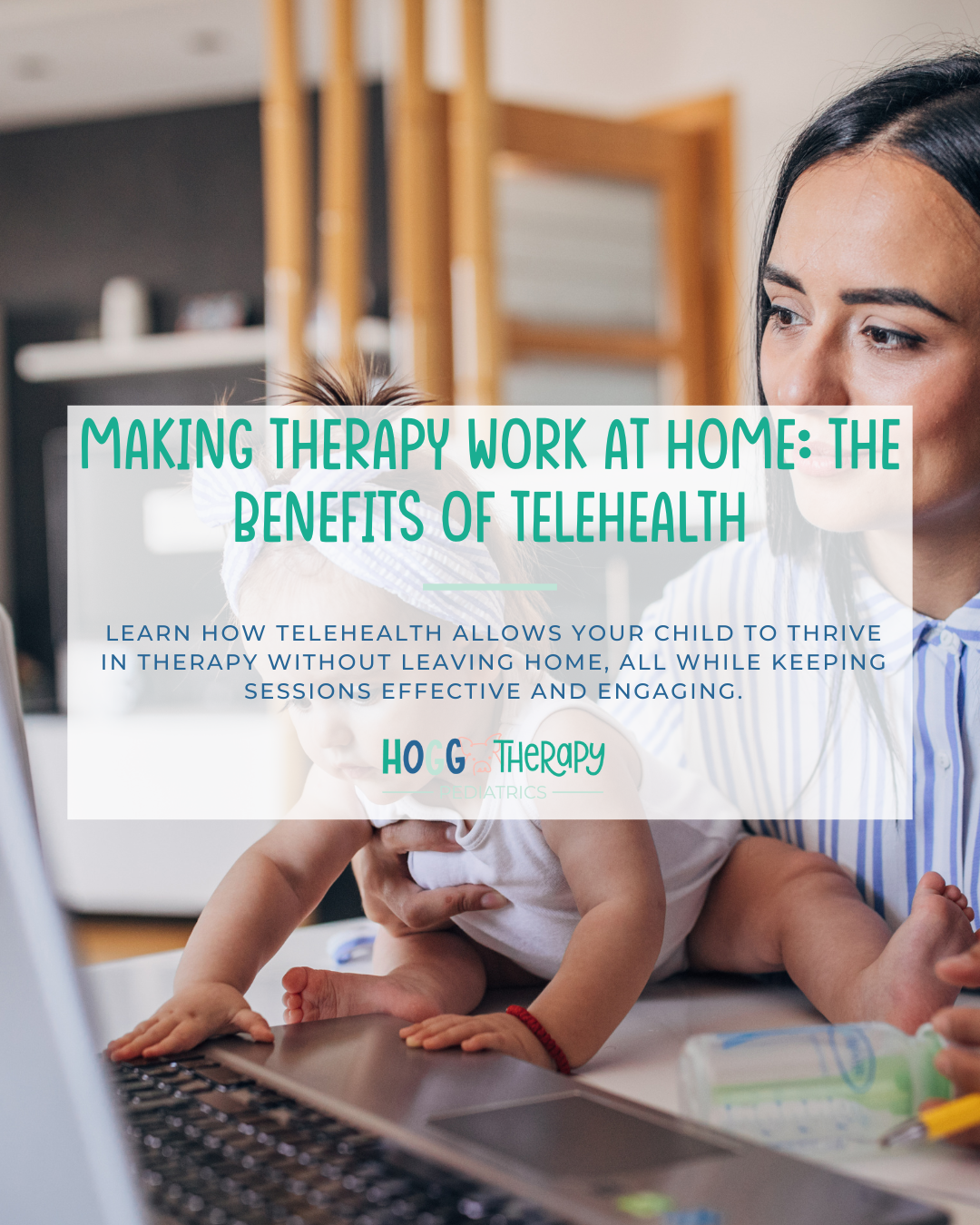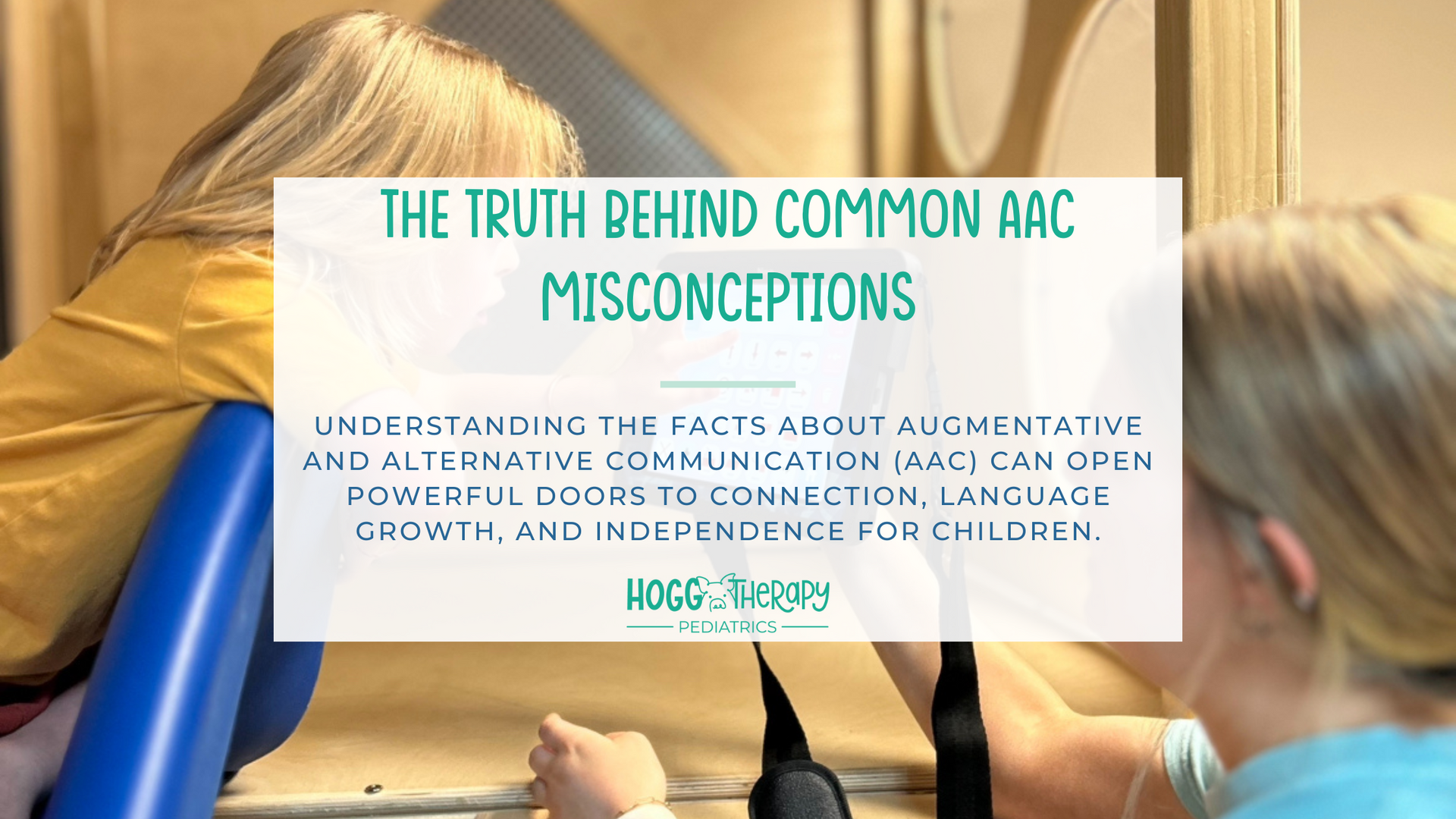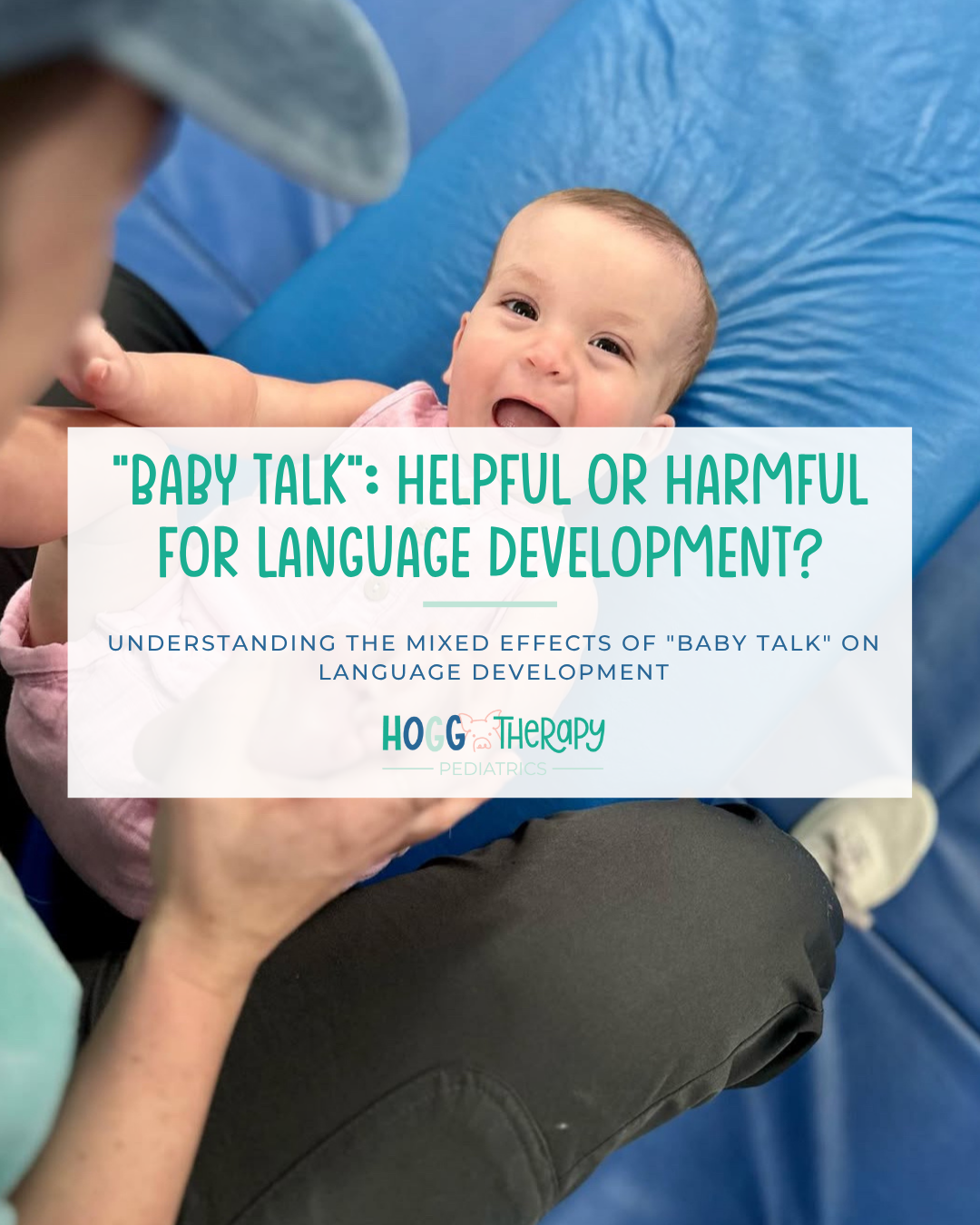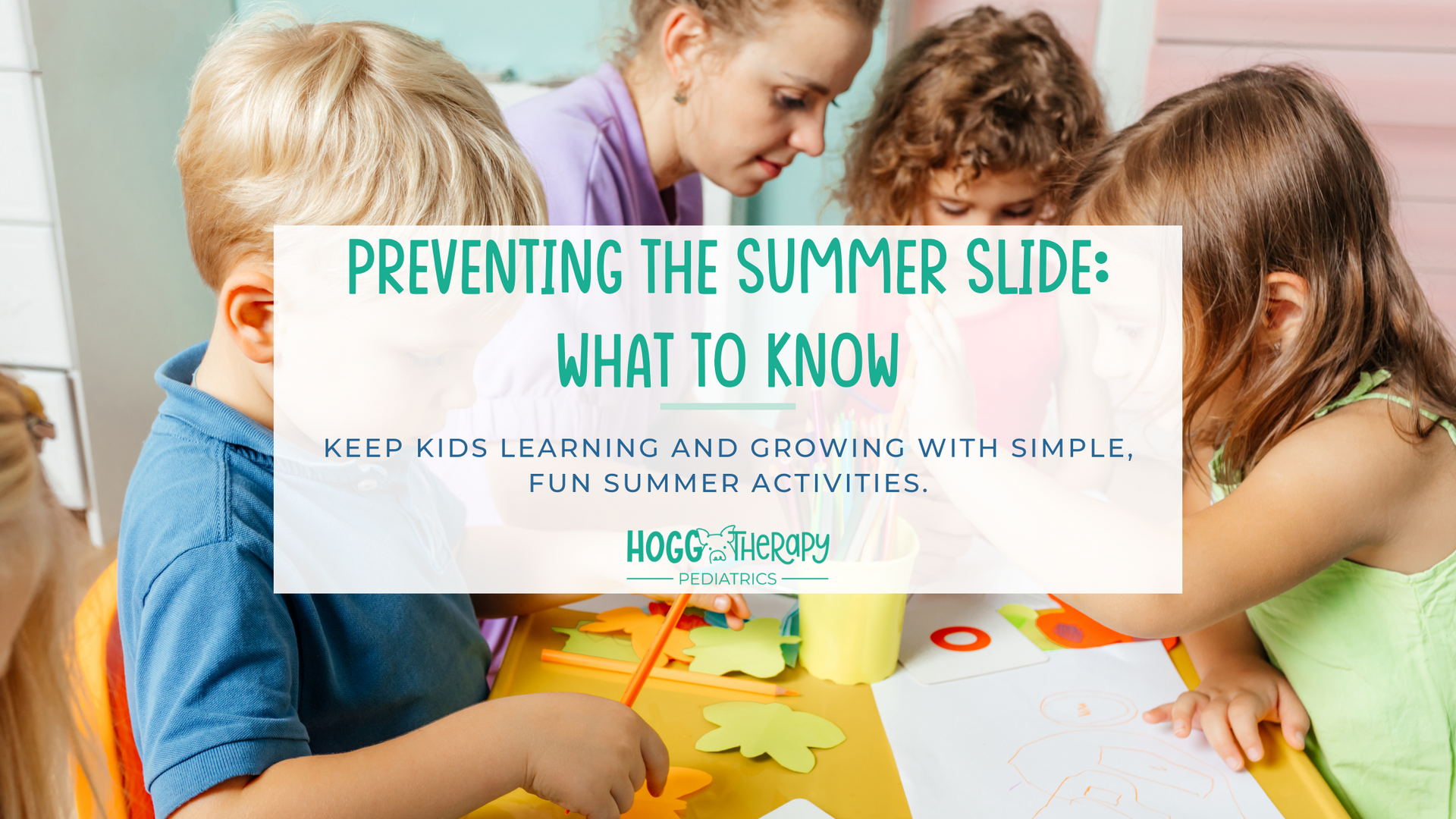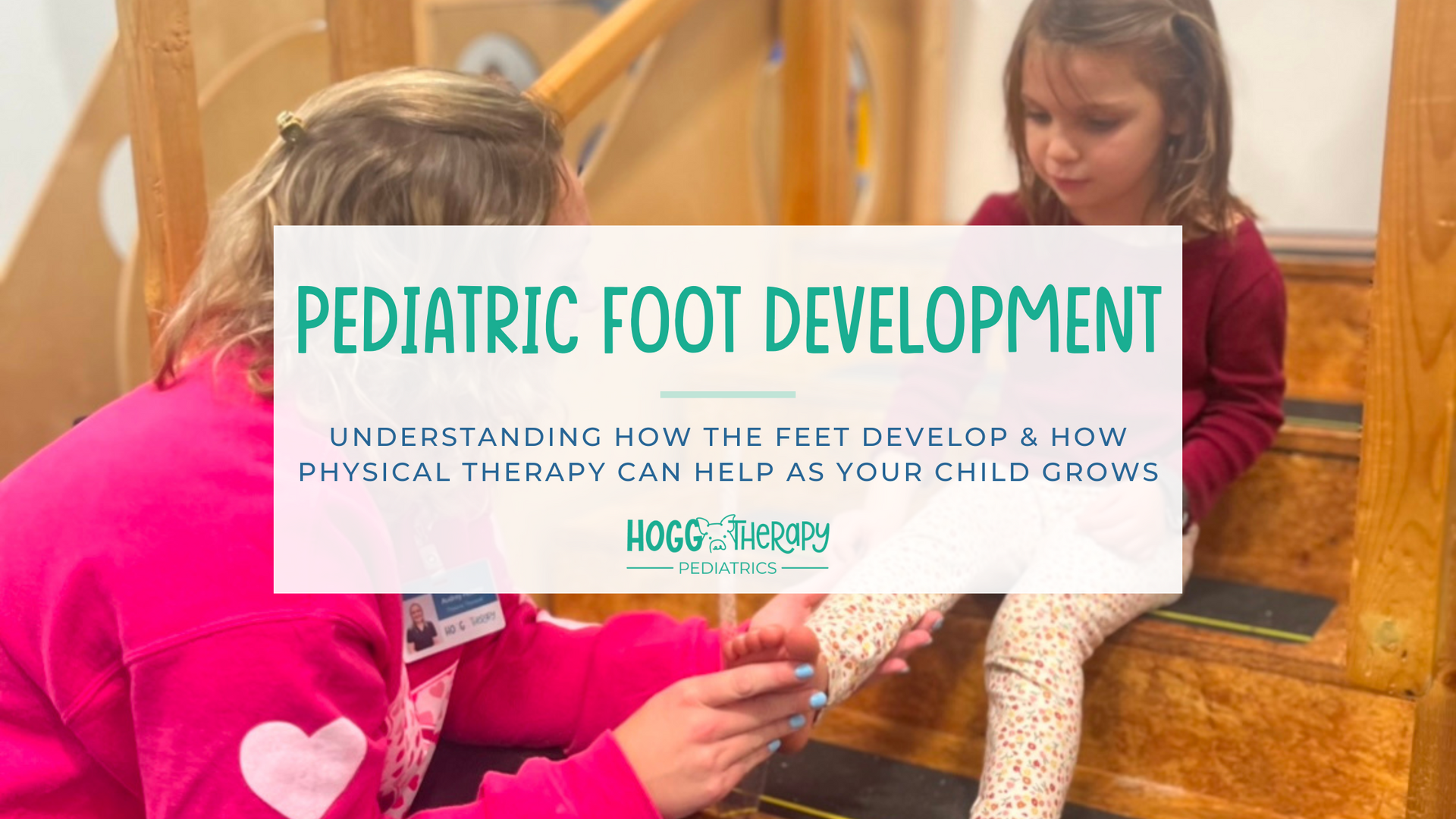When is Occupational Therapy Recommended?
By: Annie Wade, OTR/L
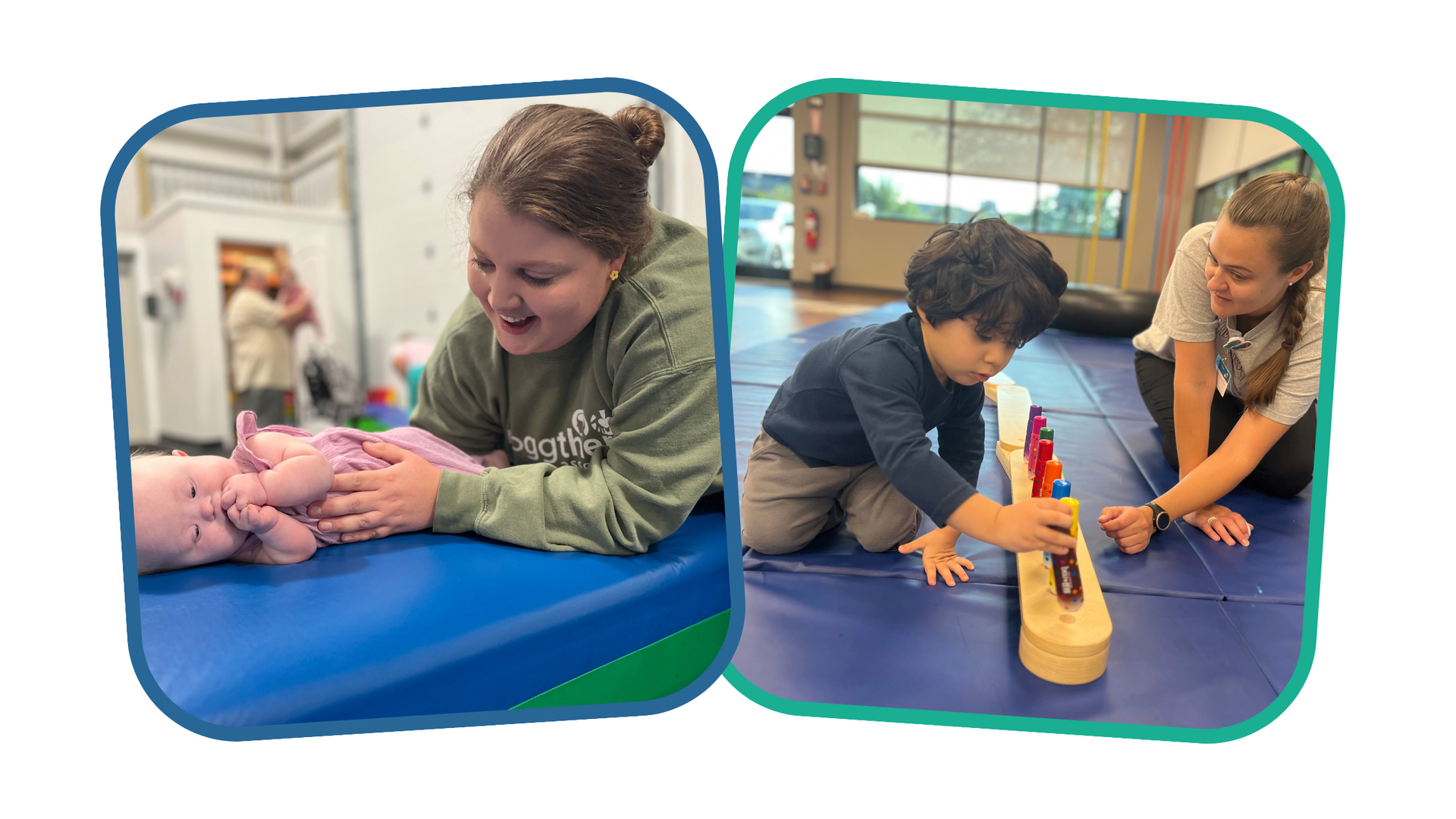
what is occupational therapy?
Occupational therapy addresses many skills for kids, such as self-care skills, fine motor skills, visual motor skills, sensory processing skills, and feeding therapy! We aim to help children seek their independence in these areas, all through play!
self-care skills
If your child has difficulty completing self-care tasks such as brushing teeth, getting dressed, brushing hair, getting haircuts, or taking baths/showers due to physical reasons or for sensory reasons, occupational therapy can help! Some indicators that occupational therapy services may be beneficial include:
- Unable to do fasteners such as zippers, snaps and buttons by 5 years of age
- Unable to dress/undress self by age 4
- Becoming distressed during brushing teeth, brushing hair, hair cuts, or during showers/baths at any age
- Becoming distressed with certain textures of clothing, tags or socks
FINE motor skills
Occupational therapy can address use of hands and fine motor skills! At any age, fine motor skills are a crucial part of development and can impact skills later in life, such as handwriting. Indicators that occupational therapy services may be beneficial include:
- Holding crayon/pencil with full fist by age 4 (should be holding in fingers by this age)
- Unable to snip paper with scissors by age 4
- Unable to hold small objects between pointer finger and thumb by age 1
- Unable to string/lace beads by age 4
- Difficulty opening snack containers/water bottles/lunch boxes after age 5
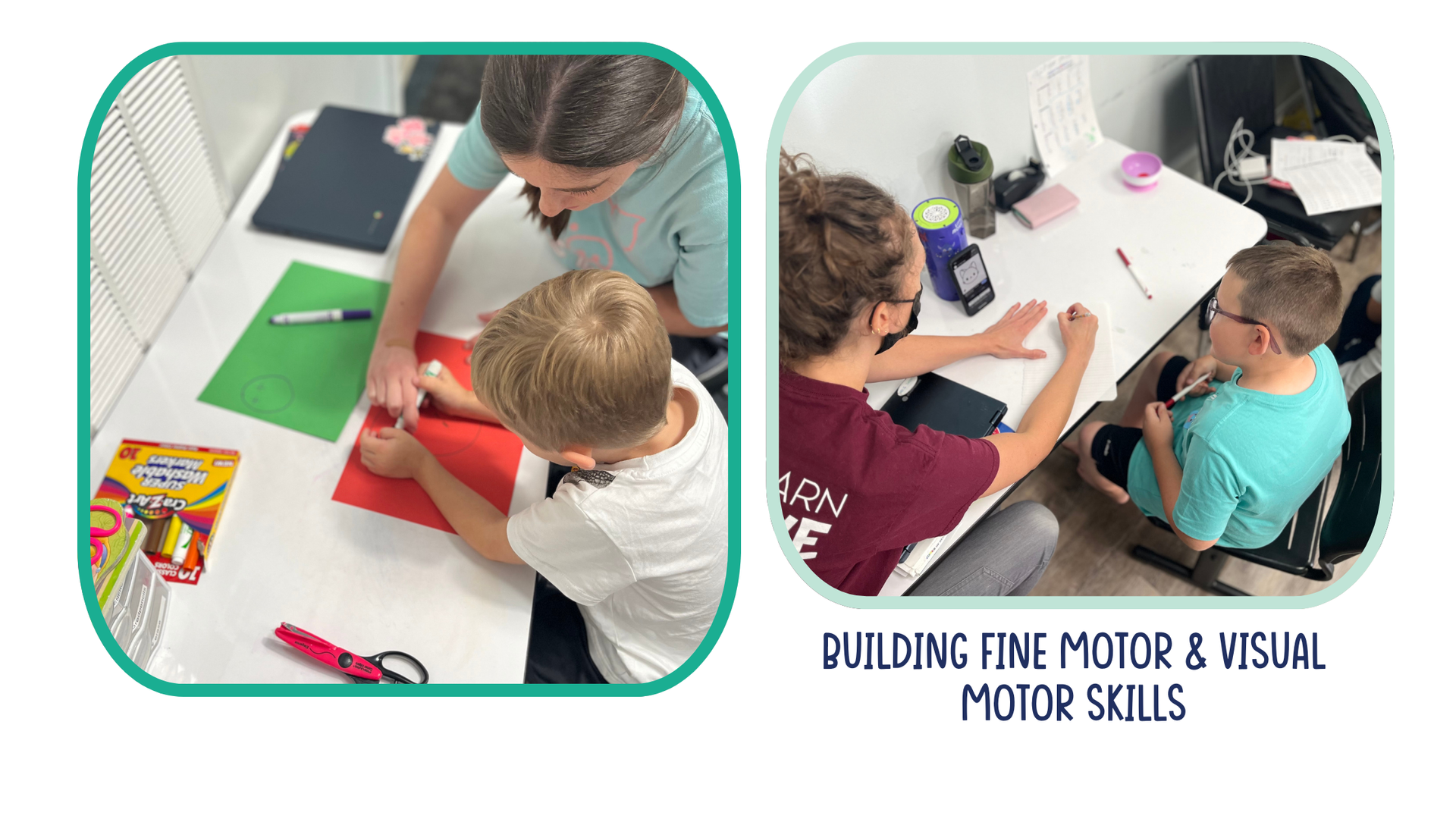
Visual motor skills
Visual motor skills are using hands and eyes together to complete a task such as catching a ball, drawing, handwriting, reading and completing mazes. Indicators to seek out occupational therapy services for visual motor skills include:
- Unable to copy horizontal and vertical lines by age 3
- Difficulty copying/writing letters by age 6
- Not reaching for toys by 4 months of age
- Not able to complete simple puzzle by age 3
sensory processing skills
Sensory processing is a HUGE part of what occupational therapy services address. Sensory processing is how our bodies and brains take in sensory information, process it and respond to that information in a meaningful and purposeful way. Indicators that your child may benefit from occupational therapy services to address sensory processing difficulties include, but are not limited to:
- Child constantly seeking out movement or actively avoiding movement (swings, slides, etc.)
- Becomes significantly distressed with hands or clothing being dirty
- Avoids places with loud noises and becomes distressed around loud noises
- Constant crashing, jumping, fall to the point of becoming unsafe or affecting day to day activities
- Difficulty with emotional regulation and calming down after emotional outbursts
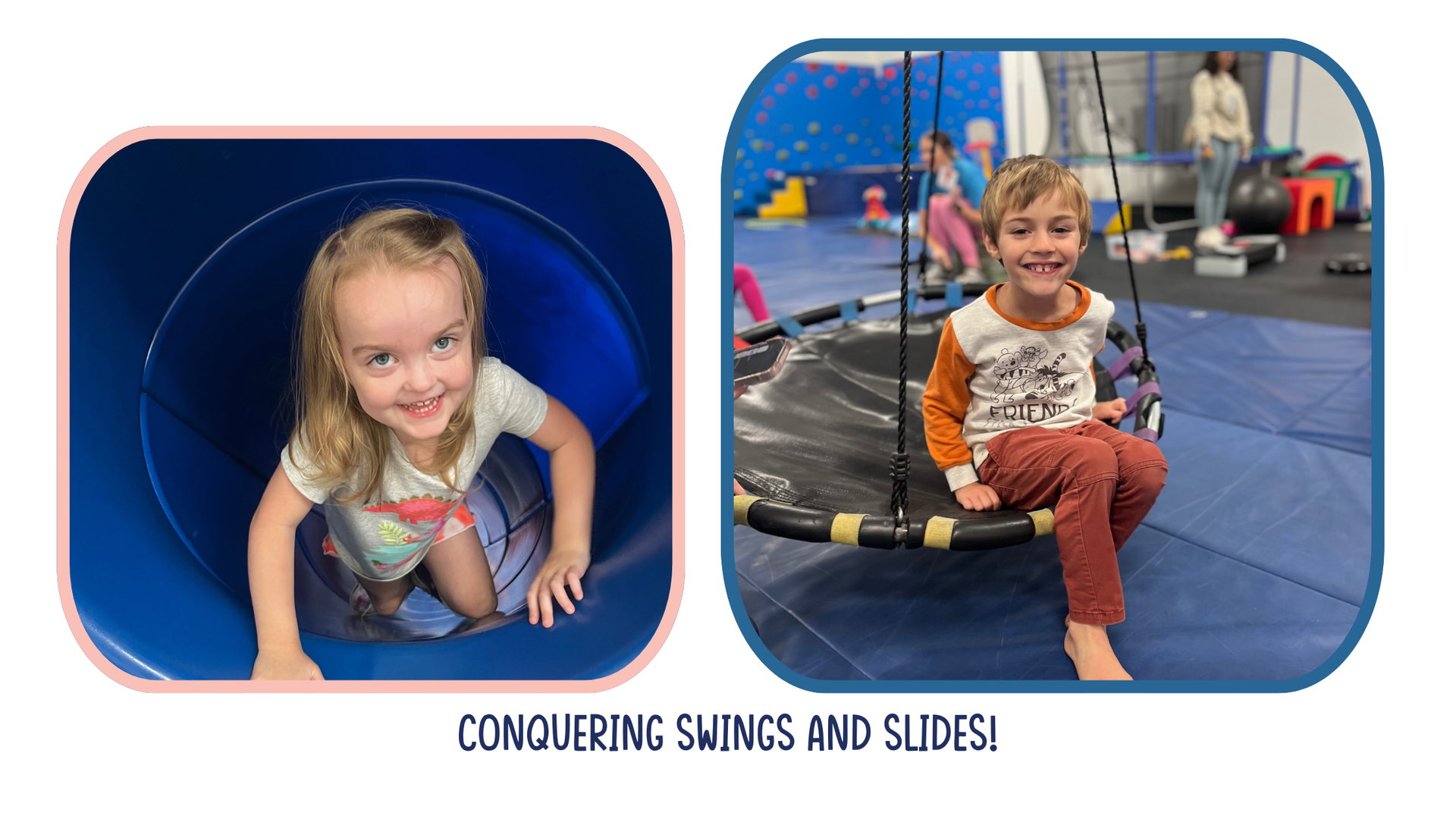
feeding therapy
Occupational therapists address feeding therapy through a whole body and sensory processing approach. While children will have preferred and non-preferred foods and may go through periods of eating less types of foods, it is important to know when "picky eating" becomes a concern. Signs that your child may benefit from occupational therapy feeding therapy include, but are not limited to:
- Child eating less than 30 food items
- Child is omitting entire food categories
- Child will not try new foods, even to task
- Child will gag and/or run from table when asked to try new foods
- Child struggles to sit during mealtimes or needs to have electronics to eat food
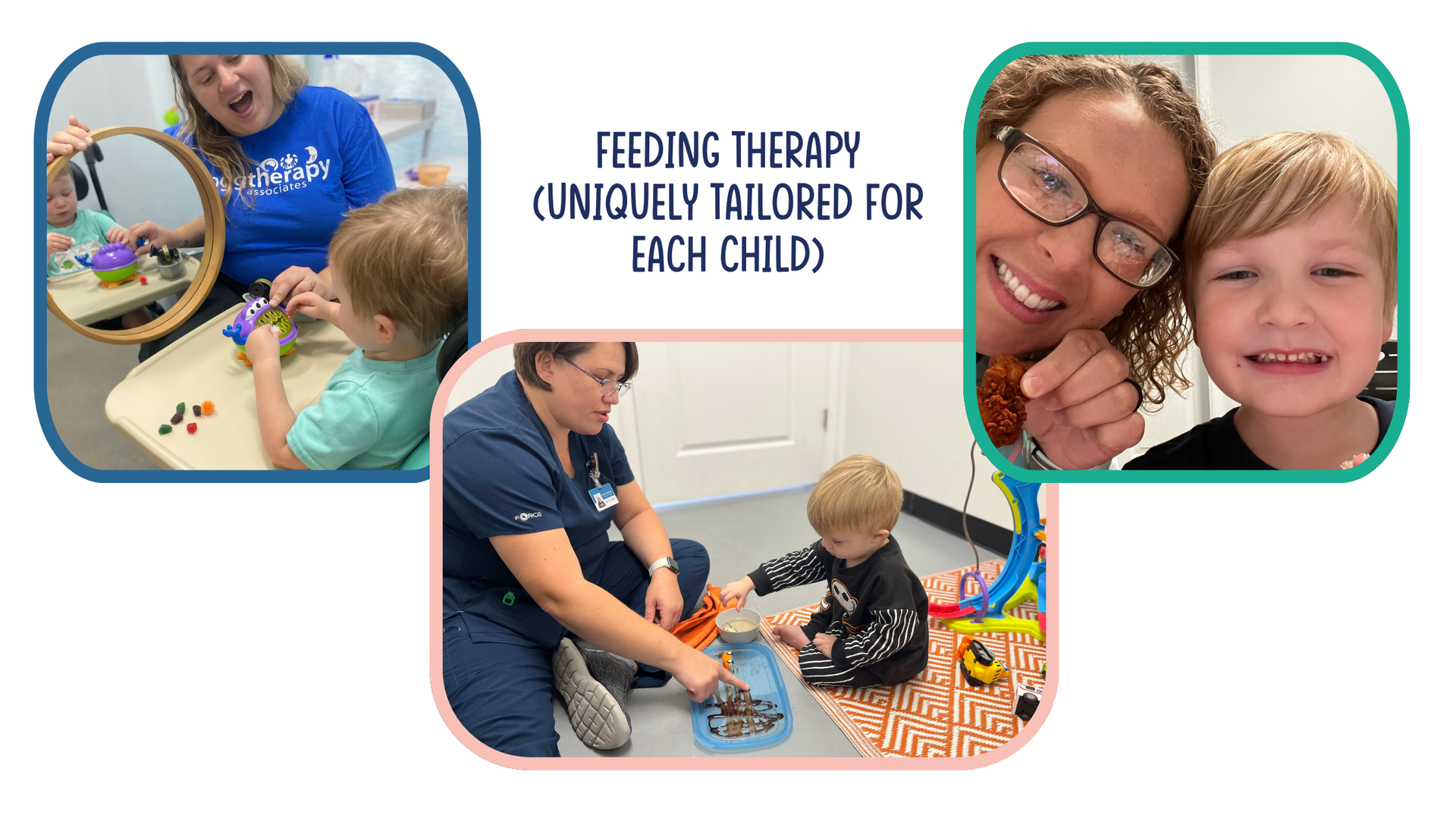
How We Can Help
If you think your child could benefit from occupational therapy, we are here to help! Read more about
Feeding Therapy or
Occupational Therapy services on our website. Give us a call at 859-353-3666 to schedule an evaluation, or use our
free screening tool to learn more. We can help your child play their way to success!






